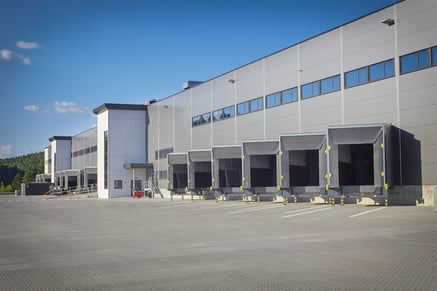
Your warehouse is the beating heart of your market presence—when it is set up properly, it supports your organization all the way from supply chain sourcing to end consumer. That means one of the most crucial decisions you can make for your business is the placement and layout of your warehouse—and "flying blind" in your commercial real estate search is a surefire way to stoke anxiety.
So what's the best way to find optimal warehouse space in your key customer markets? Here's a step-by-step guide to making the process a lot less painful:
Know Your Needs and Limitations
The first thing you need to do is look inward—begin by carefully defining the requirements that are needed for your company and product. For instance, if you are a company that deals with hazardous materials, you will be limited in terms of warehouse space that will accommodate your needs. The earlier you can define your needs and restrictions, the better you will be able to find a place to suit your needs.
While this might seem like common sense, you need to look ahead to assess your future company needs. A lot of companies end up hyper-focusing on their "here and now" state instead of anticipating future requirements. Your ideal warehouse should be able to accommodate additional volume and additional technology your supply chain may take on. If your warehouse has the potential to expand rapidly in the near future, look for locations that are adjacent to expansion possibilities within the same industrial building or complex.
Nurturing and supporting momentum is crucial to staying competitive, and hitting the brakes every few years to start from scratch simply isn't conducive to staying in motion.
Planning Ahead of Time
Much like moving from one residential home to another, the more preparation infused into your commercial real estate search, the better. Research your customer demand cycles, the cost-per-mile to widen your supply chain to secondary or tertiary markets, the proximity to high-volume vendors and clients, and so on. You should be able to confidently "ballpark" the operational cost difference in a potential new warehouse over an existing one and use that impression to drive informed function/financial decisions on contenders.
Consider questions like these in your planning once potential properties are located: 
- Are there enough docks for my anticipated volume of delivery and 3PL traffic?
- Does the property have the infrastructure—electricity, square footage, facilities—that my business needs?
- Will the landlord work with the contract terms that fit my needs—payment method, utilities, etc.?
- Are the actual physical measurements what I need—clearance height, doorways, etc.?
Part of planning can—and should—involve the expertise of your warehouse team. Make sure you understand any pain points they're dealing with in your current property. This will position you to resolve those pain points by selecting the right warehouse for your workflows. Ask them to meet to come up with a wishlist of desired warehouse traits, and be sure to discuss any that come as a surprise to you. (This step will also assure to your team that you listen to and want their opinions.)
Don't Be Inflexible
If you arrive at the negotiation table without any "wiggle room," you're more likely to leave it disappointed. Remember that unless you're building your warehouse from the ground up, there will likely be some aspects that don't fit your expectations. Chances are, the warehouse your business currently resides in had a few less-than-optimal traits when you moved in, but you learned to work with and around them then, and you will again.
It's particularly important to stay open-minded when it comes to location; most businesses don't have an unlimited warehousing budget, and rents creep skyward the closer you roam to hot markets.
Consider infrastructure benefits like nearby public transit for worker commutes, lower taxes, lower rents, and a relatively untapped labor market, before writing off warehouses that are "too far" from your ideal location.
Cost Comes in Many Forms
While the initial rent and utilities on an older building can be tempting from a budget standpoint, remember that retrofitting and gap-bridging measures come with substantial price tags of their own. In other words, make sure you aren't penny wise and pound foolish with your operations—bringing an older building up to speed takes time, design, and money, and your company might not be able to spare all three in the middle of a move. Stepping into a new building “ready to go” might end up being substantially more cost-effective than sticking out an older property and hoping for the best.
Partner with an Expert
There are only so many things a company can do well at the same time: even Google's history is littered with real estate experiments that never panned out. Your hunt for commercial real estate can't afford to be an experiment, as the cost of learning is far too steep for even the most well-established companies. Partner with a commercial or industrial real estate professional to help you avoid common pitfalls, alert you to new or upcoming listings, and help you secure a rental contract that works for your operations, budget, and future outlook.
To Sum It Up
Moving your warehouse is difficult enough, so make sure that the journey to your new base of operations isn't unnecessarily cluttered with obstacles. Follow these tips to ensure that the new warehouse your team calls "home" is a comfortable, performance-minded fit for the demands of your market, your customers, and your brand. Find out more in Kenco's Supply Chain Network Design eBook.



